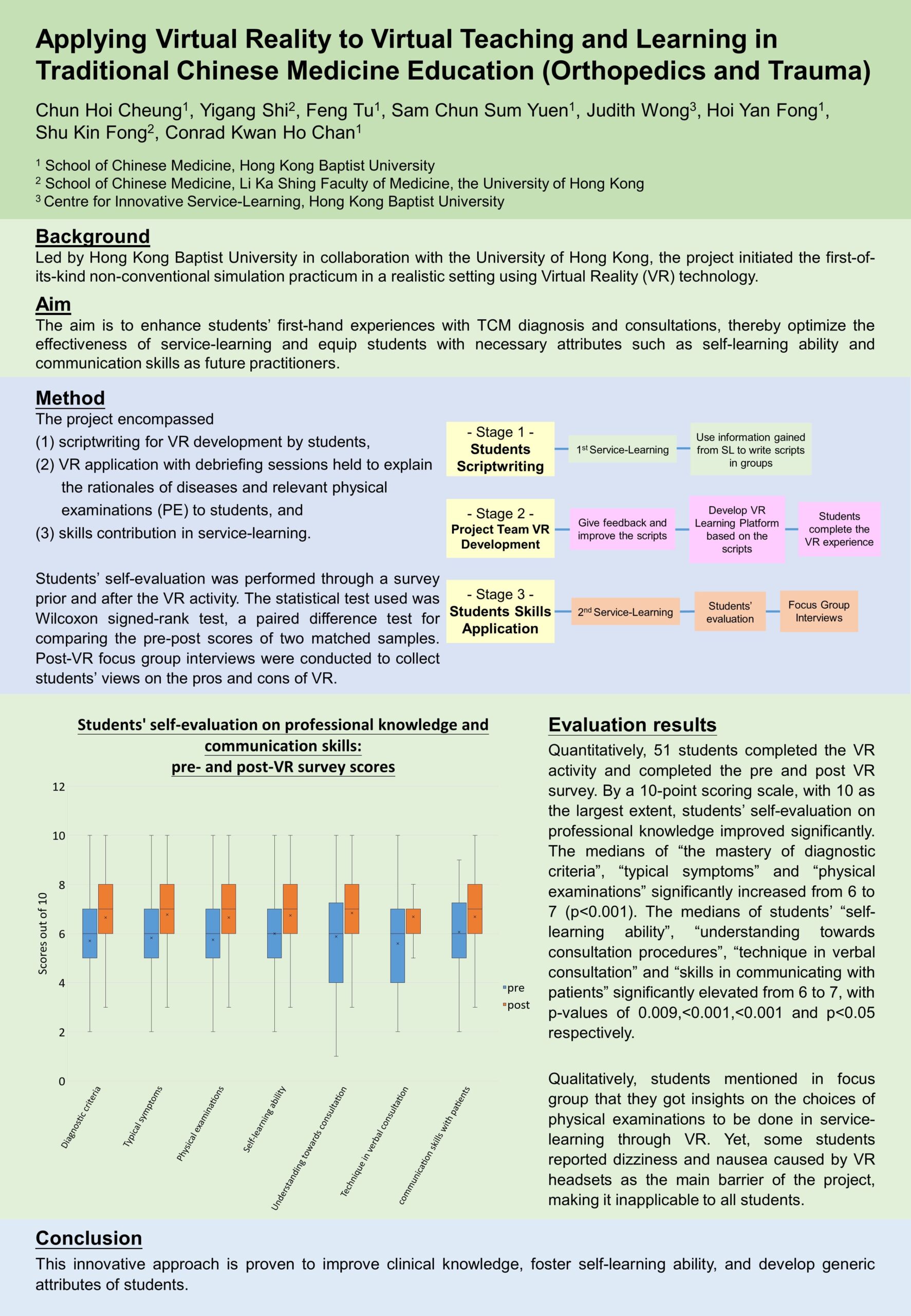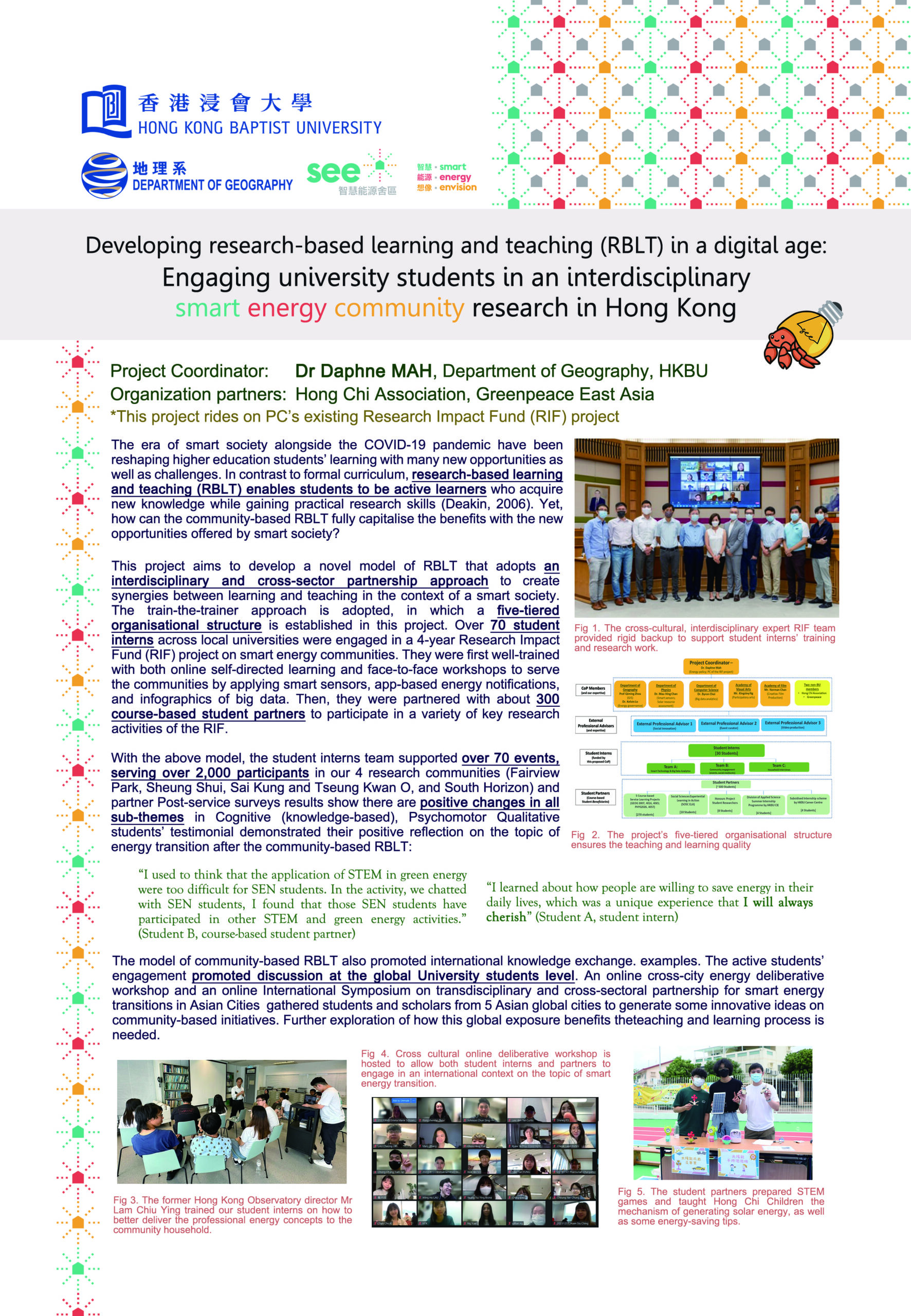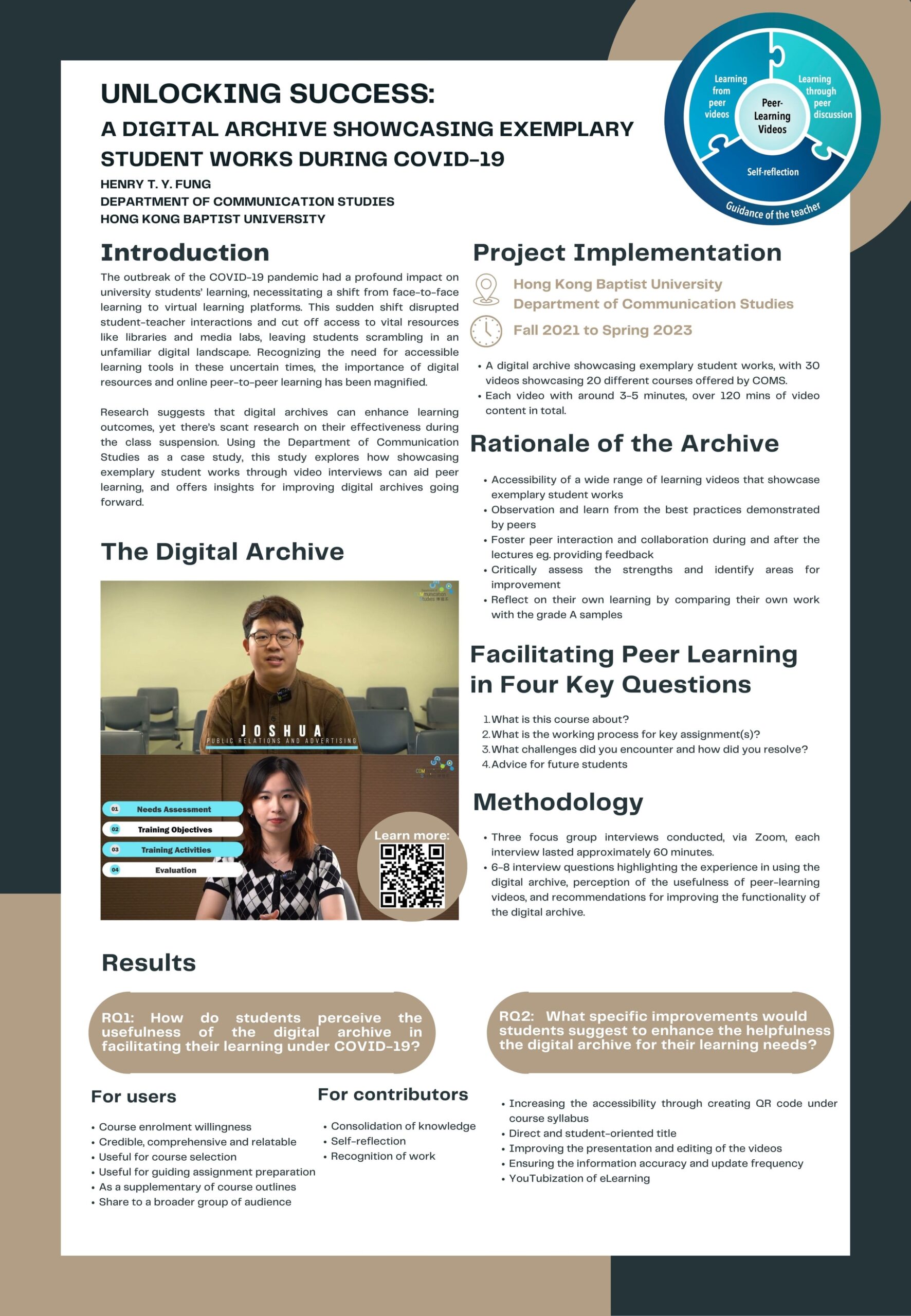Filter Presentations
3 posts found
Poster Presentation Time: 1225-1400; 1500-1600
Venue: F4, Tai Po-Shek-O Room, Lower Level I
Presenter(s)
– Mr Chun Hoi CHEUNG, Assistant Professor of Practice, School of Chinese Medicine, Hong Kong Baptist University
– Miss Hoi Yan FONG, Hong Kong Baptist University
– Miss Judith WONG, Hong Kong Baptist University
– Mr Conrad Kwan Ho CHAN, Hong Kong Baptist University
– Mr Shu Kin FONG, Hong Kong Baptist University
Abstract
Background: Led by Hong Kong Baptist University in collaboration with the University of Hong Kong, the project initiated the first-of-its-kind non-conventional simulation practicum in a realistic setting using Virtual Reality(VR) technology. Aim: The aim is to enhance students’ first-hand experiences with TCM diagnosis and consultations, thereby optimize the effectiveness of service-learning and equip students with necessary attributes such as self-learning ability and communication skills as future practitioners. Method The project encompassed (1)scriptwriting for VR development, (2)VR application with debriefing sessions held to explain the rationales of diseases and relevant physical examinations(PE) to students, and (3)skills contribution in service-learning. Numerical data was obtained through pre and post VR survey for analysis. The statistical test used was Wilcoxon signed-rank test, a paired difference test for comparing the pre-post scores of two matched samples. Post-VR focus group interviews were conducted to collect students’ views on the pros and cons of VR. Evaluation results Quantitatively, 51students completed the VR activity and responded the pre and post VR survey. Under 10-mark scoring scale with 10 as the largest extent, students’ self-evaluation on professional knowledge improved significantly. The medians of the mastery of diagnostic criteria, typical symptoms and physical examinations all increased from 6 to 7 with p<0.001. Students’ self-learning ability, understanding towards consultation procedures, technique in verbal consultation and skills in communicating with patients elevated from 6 to 7 in median, with p-values of 0.009,<0.001,<0.001 and p<0.05 respectively. Qualitatively, students mentioned in focus group that they got insights on the choices of physical examinations to be done in service-learning through VR. Yet, some students reported dizziness and nausea caused by VR headsets as the main barrier of the project, making it inapplicable to all students. Conclusion: This innovative approach is proven to improve clinical knowledge, foster self-learning ability, and develop generic attributes of students.
Theme: 1: Showcase Project Achievements
Sub-theme: 1.1 Teaching Development and Language Enhancement Grant (TDLEG)
Poster Presentation Time: 1500-1600; 1700-1800
Venue: B1, Tai Po-Shek-O Room, Lower Level I
Presenter(s)
– Miss Eunice Yuen Man CHAU, Senior Research Assistant, Department of Geography, Asian Energy Studies Centre, Hong Kong Baptist University
– Mr Andy Wei Hei SIU, Senior Research Assistant, MPhil student, Department of Geography, Asian Energy Studies Centre, Hong Kong Baptist University
Abstract
In this digital era, the learning model of higher education students has been reshaping due to emerging social structures and technological forces in a smart society, alongside the COVID-19 pandemic. Previous research has shown that there are several barriers to the implementation of research-based learning and teaching (RBLT) from the perspective of both students and teachers that are insufficient to cope with the changes in the present, and community-based learning that utilises the community as living laboratories seems to be a feasible solution. This research aims to develop a novel model of RBLT, adopting a train-the-trainer approach for over 70 student interns across local universities, and establishing a five-tiered organisational structure to comprehensively evaluate their positive changes in all sub-themes in Cognitive (knowledge-based), Psychomotor (action-based), and Affective (emotion-based) domains. Research data were collected from more than 70 events supported by trained student interns serving over 2,000 participants in our four research communities and partner schools. The research indicated that the impact of the model of community-based RBLT went beyond enhanced teaching and learning effectiveness for students and teachers. The combination of online and physical learning experiences also created synergies between learning and teaching.
Theme: 2. Thematic Exploration
Sub-theme: 2.1 Community of Practice (CoP)
Poster Presentation Time: 1225-1400; 1500-1600
Venue: H3, Tai Po-Shek-O Room, Lower Level I
Presenter(s)
– Dr Henry Tsz Yeung FUNG, Lecturer cum Programme Director of ORGC Concentration, Communication Studies, Hong Kong Baptist University
Abstract
The outbreak of the COVID-19 pandemic had a profound impact on university students’ learning, necessitating a sudden shift from face-to-face learning to virtual learning. This sudden shift disrupted student-teacher interactions and cut off access to vital resources like libraries and media labs, leaving students scrambling in an unfamiliar digital landscape. Recognizing the need for accessible learning tools in these uncertain times, this study centres on the curation of a digital video archive featuring exemplary student works to facilitate peer-to-peer learning in the context of the COVID-19 pandemic. Fifty high-achieving students majoring in communication were invited to discuss their learning experiences and the processes involved in creating distinct class projects. These interviews were then turned into thirty short peer-learning videos and stored in a digital archive. The archive was advertised to over 200 students via mass email, in-class promotions, and school web pages during the Fall 2022 and Spring 2023 semesters. To gain a better understanding of student engagement with the digital archive as a means of active learning and knowledge construction, three focus group interviews were conducted. Findings reveal that the archive positively impacts student learning by providing an accessible, flexible platform for understanding course materials outside of the traditional classroom setting. This is particularly useful during the add/drop period when students want to learn more about the course before enrolment. Additionally, the peer advice and work samples shared in the videos provide a grounded perspective on instructor expectations, hence enabling students to produce higher-quality work.


